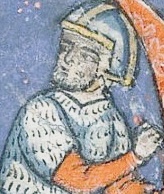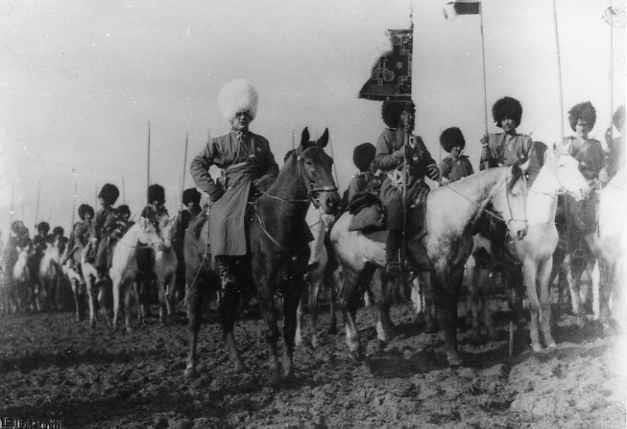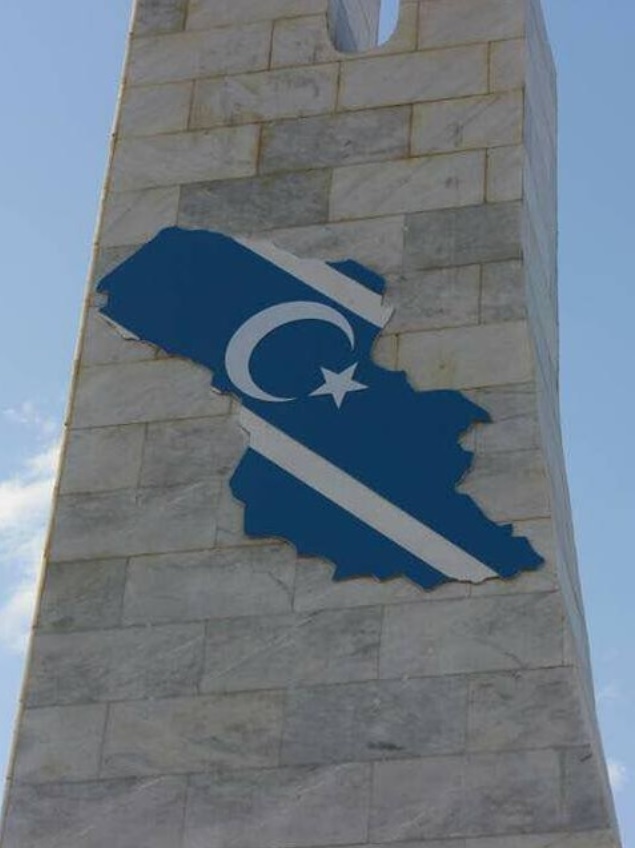|
Turkmen
Turkmen, Türkmen, Turkoman, or Turkman may refer to: Peoples Historical ethnonym * Turkoman (ethnonym), ethnonym used for the Oghuz Turks during the Middle Ages Ethnic groups * Turkmen in Anatolia and the Levant (Seljuk and Ottoman-Turkish descendants): ** Iraqi Turkmen, a Turkish minority living mostly in the Turkmeneli region in northern Iraq ** Turks in Israel, a Turkish minority living in Israel ** Turks in Lebanon, a Turkish minority living in Lebanon ** Syrian Turkmen, a Turkish minority living mostly in northern Syria ** Yörüks, a semi-nomadic group in Anatolia often referred to as Turkmen in Turkey ** Anatolian beyliks, small principalities in Anatolia governed by Beys, late 11th–13th centuries * Turkmens, a Turkic people native to Central Asia living primarily in Turkmenistan and North Caucasus ** Iranian Turkmens, Turkmen minority living in Iran ** Afghan Turkmens, Turkmen minority living in Afghanistan ** Turkmen in Pakistan, mostly Turkmen refugees from Afghan ... [...More Info...] [...Related Items...] OR: [Wikipedia] [Google] [Baidu] |
Turkmens
Turkmens ( tk, , , , ; historically "the Turkmen"), sometimes referred to as Turkmen Turks ( tk, , ), are a Turkic ethnic group native to Central Asia, living mainly in Turkmenistan, northern and northeastern regions of Iran and north-western Afghanistan. Sizeable groups of Turkmens are found also in Uzbekistan, Kazakhstan, and the North Caucasus ( Stavropol Krai). They speak the Turkmen language, which is classified as a part of the Eastern Oghuz branch of the Turkic languages. Examples of other Oghuz languages are Turkish, Azerbaijani, Qashqai, Gagauz, Khorasani, and Salar. In the early Middle ages, Turkmens called themselves Oghuz and in the Middle Ages they took the ethnonym Turkmen. These early Oghuz Turkmens moved westward from the Altai Mountains through the Siberian steppes, and settled in the region now known as Turkmenistan. Further westward migration of the Turkmen tribes from the territory of modern Turkmenistan and the rest of Central Asia started from ... [...More Info...] [...Related Items...] OR: [Wikipedia] [Google] [Baidu] |
Iraqi Turkmen
The Iraqi Turkmens (also spelled as Turkoman and Turcoman; tr, Irak Türkmenleri), also referred to as Iraqi Turks, Turkish-Iraqis, the Turkish minority in Iraq, and the Iraqi-Turkish minority ( ar, تركمان العراق; tr, Irak Türkleri) are Iraq's third largest ethnic group. Whilst Turkic migration to Iraq began in the 7th century, followed by 1055's Seljuk conquest, today most Turkmen are descendants of Ottoman soldiers, traders and civil servants who were brought into Iraq from Anatolia during Ottoman Empire, Ottoman rule. Iraqi Turkmen share close ties with Turkish people and do not identify with the Turkmens, Turkmen of Turkmenistan and Central Asia.: "Turkmen, Iraqi citizens of Turkish origin, are the third largest ethnic group in Iraq after Arabs and Kurds and they are said to number about 3 million of Iraq's 34.7 million citizens according to the Iraqi Ministry of Planning." Ethnonyms Prior to the mid-20th century the Turkmens in Iraq were known simply as " ... [...More Info...] [...Related Items...] OR: [Wikipedia] [Google] [Baidu] |
Syrian Turkmen
Syrian Turkmen, also referred to as Syrian Turkomans, Turkish Syrians, or simply Syrian Turks or Turks of Syria, ( ar, تركمان سوريا; tr, Suriye Türkmenleri or ) are Syrian citizens of Turkish people, Turkish origin who mainly trace their roots to Anatolia (i.e. modern Turkey). Turkish language, Turkish-speaking Syrian Turkmen make up the third largest ethnic group in the country, after the Arabs and Kurds respectively. The majority of Syrian Turkmen are the descendants of migrants who arrived in Syria during Ottoman Empire, Ottoman rule (1516–1918);. however, there are also many Syrian Turkmen who are the descendants of earlier Turkish settlers that arrived during the Seljuk Empire, Seljuk (1037–1194) and Mamluk Sultanate (Cairo), Mamluk (1250–1517) periods. Some estimates indicate that if Arabization, Arabized Turkmen (i.e. those who no longer speak their main language) are taken into account, then they form the second largest group in the country.. The major ... [...More Info...] [...Related Items...] OR: [Wikipedia] [Google] [Baidu] |
Turkmen Language
Turkmen (, , , or , , , ), sometimes referred to as "Turkmen Turkic" or "Turkmen Turkish", is a Turkic language spoken by the Turkmens of Central Asia, mainly of Turkmenistan, Iran, and Afghanistan. It has an estimated 5 million native speakers in Turkmenistan, a further 719,000 speakers in northeastern Iran, 1.5 million people in northwestern Afghanistan and 155,000 in Pakistan. Turkmen has official status in Turkmenistan, but it does not have official status in Iran, Afghanistan, or Pakistan, where big communities of ethnic Turkmens live. Turkmen is also spoken to lesser varying degrees in Turkmen communities of Uzbekistan and Tajikistan and by diaspora communities, primarily in Turkey and Russia. Turkmen is a member of the Oghuz branch of the Turkic languages. The standardized form of Turkmen (spoken in Turkmenistan) is based on the Teke dialect, while Iranian Turkmen use mostly the Yomud dialect, and Afghan Turkmen use Ersary variety. Turkmen is closely related to Azerb ... [...More Info...] [...Related Items...] OR: [Wikipedia] [Google] [Baidu] |
Turkoman (ethnonym)
Turkoman (Middle Turkic languages, Middle Turkic: تُركْمانْ, ota, تركمن, Türkmen and ''Türkmân''; az, Türkman and ', tr, Türkmen, tk, Türkmen, Persian language, Persian: ترکمن sing. ''Turkamān'', pl. ''Tarākimah''), also called Turcoman and Turkman, is a term that was widely used during the Middle Ages for the people of Oghuz Turks, Oghuz Turkic origin. Oghuz Turks were a western Turkic people that, in the 8th century A.D, formed a Oghuz Yabgu State, tribal confederation in an area between the Aral Sea, Aral and Caspian Sea, Caspian seas in Central Asia, and spoke the Oghuz languages, Oghuz branch of the Turkic language family. ''Turkmen'', originally an exonym, dates from the High Middle Ages, along with the ancient and familiar name "Turkic peoples, Turk" (), and tribal names such as "Bayat (tribe), Bayat", "Bayandur", "Afshar (tribe), Afshar", "Kayi", and others. By the 10th century, Islamic sources were calling Oghuz Turks as Muslim Turkmens, as o ... [...More Info...] [...Related Items...] OR: [Wikipedia] [Google] [Baidu] |
Turkmen Tribes
The major modern Turkmen tribes are Teke, Yomut, Ersari, Chowdur, Gokleng and Saryk. The most numerous are the Teke. The origin of all of these tribes is traced to 24 ancient Oghuz tribes, among which the Salur tribe played a prominent role as its people are considered the ancestors of a couple of modern Turkmen tribes such as Teke, Yomut and Ersari. Seljuks, Khwarazmians, Qara Qoyunlu, Aq Qoyunlu, Ottomans and Afsharids are also believed to descend from the early Oghuz Turkmen tribes of Qiniq, Begdili, Yiwa, Bayandur, Kayi and Afshar respectively. Tribes Teke Teke is a major and historically one of the most influential modern Turkmen tribes. Teke originated from the Oghuz tribe of Salur in the 11th or 12th century. The tribe is subdivided into two, the Akhal Teke and Mary Teke. British Lt. Col. C.E. Stuart in 1830s also noted a subdivision into four clans, the Wakil (another variant is Wekil), Beg, Suchmuz, and Bukshi: "The Wakil and Beg clans are collectively ... [...More Info...] [...Related Items...] OR: [Wikipedia] [Google] [Baidu] |
Iranian Turkmens
Iranian Turkmens ( fa, ترکمنهای ایران; tk, ایران تۆرکمنلری, Eýran Türkmenleri) are a branch of Turkmen people living mainly in northern and northeastern regions of Iran. Their region is called Turkmen Sahra and includes substantial parts of Golestan Province of Iran. The number of Turkmens in Iran is estimated at 0.5 to 1 million people. Ethnography Iranian Turkmens have represented a group of semi-nomadic tribes who retained a more traditional way for a long time. The following Turkmen tribes live in Iran: Yomut, Goklen, and Teke. Ethnic history Representatives of such modern Turkmen tribes as Yomut, Goklen, Īgdīr, Saryk, Salar and Teke have lived in Iran since the 16th century, though ethnic history of Turkmens in Iran starts with the Seljuk conquest of the region in the 11th century. Throughout the 17th century and the beginning of the 18th century, a process of resettlement of the Turkmen tribes took place in Iran. In the 17th ... [...More Info...] [...Related Items...] OR: [Wikipedia] [Google] [Baidu] |
Turkmen Sahra
Turkmen Sahra ( fa, ترکمن صحرا) is a region in the northeast of Iran near the Caspian Sea, bordering Turkmenistan, the majority of whose inhabitants are ethnic Turkmen. The most important cities of Turkmen Sahra are Gonbad-e Kavus, Aqqala, Kalaleh, Maraveh Tappeh, Gomishan and Bandar Torkaman. There are, according to Ethnologue, roughly 719,000 Turkmens in Turkmen Sahra today. Society Turkmens today in Turkmensahra live fairly modern lifestyles, although the effects of religion and the Muslim way of life are visible. The economy is based on industry, even if agriculture still plays a great role in some Turkmens' life, like in other places of Iran. The professions among Turkmens shows the pattern of a modern economy even if there are still some shortcomings due to lack of funding from the central authorities. The economic potential of Turkmensahra is big since a vast amount of oil was discovered early in the 1930. But since there was a deal with the Soviet Union that t ... [...More Info...] [...Related Items...] OR: [Wikipedia] [Google] [Baidu] |
Turkmen Alphabet
The Turkmen alphabet ( tk, Türkmen elipbiýi / / ) refers to variants of the Latin alphabet, Cyrillic alphabet, or Arabic alphabet used for writing of the Turkmen language. The modified variant of the Latin alphabet currently has an official status in Turkmenistan. At the start of the 20th century, when Turkmen started to be written, it used the Arabic script, but in Soviet Turkmenistan in 1928, the Latin script was adopted. In 1940, the Russian influence in Soviet Turkmenistan prompted a switch to a Cyrillic alphabet and a Turkmen Cyrillic alphabet (shown below in the table alongside the Latin) was created. When Turkmenistan became independent in 1991, President Saparmurat Niyazov immediately instigated a return to the Latin script. When it was reintroduced in 1993, it was supposed to use some unusual letters, such as the pound ( £), dollar ( $), yen ( ¥) and cent signs ( ¢), but these were replaced by more conventional letter symbols in 1999. The political and social fo ... [...More Info...] [...Related Items...] OR: [Wikipedia] [Google] [Baidu] |
Turkmeneli
Turkmeneli, also known as Turkmenland, and historically as Turcomania, ( tr, Türkmeneli, lit=Land of the Turkmens) is a political term used to define the vast swath of territory in which the Iraqi Turkmens historically have had a dominant population. The term incorporates the Iraqi Turkmen/Turkoman homelands running from Iraq's border with Turkey and Syria and diagonally down the country to the border with Iran. In particular, the Turkmen/Turkoman consider the capital of Turkmeneli to be disputed city of Kirkuk and its boundaries also include Tal Afar, Mosul (second largest city in Iraq), Erbil (capital of Kurdistan Region), Mandali, and Tuz Khurmatu. According to Liam Anderson and Gareth Stansfield, the Turkmen/Turkoman note that the term "Turcomania" – an Anglicized version of "Turkmeneli" – appears on a map of the region published by William Guthrie in 1785, however, there is no clear reference to Turkmeneli until the end of the twentieth century. Regions of Iraq The ... [...More Info...] [...Related Items...] OR: [Wikipedia] [Google] [Baidu] |
Afghan Turkmens
Afghan Turkmens or Turkmens of Afghanistan ( fa, ترکمن های افغان, tk, Owgan türkmenleri, ) live in the north-west of Afghanistan along the border with Uzbekistan and Turkmenistan, surrounded by a larger group of Afghan Uzbeks. The number of Turkmens in Afghanistan is estimated at 1 million people or roughly 2-3% of the population of Afghanistan. History Turkmens were one of the divided peoples in Central Asia nearing the end of the 19th century as a result of British, Iranian and Afghan counteraction, as well as the halt of the Russian expansion into Turkestan and Transoxiana. The original Turkmen groups arrived from the east of the Caspian Sea into northwestern Afghanistan at various periods, particularly after the end of the 19th century when the Russians moved into their territory. They established settlements from Balkh Province to Herat Province, where they are now concentrated; smaller groups settled in Kunduz Province. Others came in considerable numbers as ... [...More Info...] [...Related Items...] OR: [Wikipedia] [Google] [Baidu] |
Oghuz Turks
The Oghuz or Ghuzz Turks (Middle Turkic languages, Middle Turkic: ٱغُز, ''Oγuz'', ota, اوغوز, Oġuz) were a western Turkic people that spoke the Oghuz languages, Oghuz branch of the Turkic languages, Turkic language family. In the 8th century, they formed a Turkic tribal confederation, tribal confederation conventionally named the Oghuz Yabgu State in Central Asia. The name ''Oghuz'' is a Common Turkic word for "tribe". Byzantine Empire, Byzantine sources call the Oghuz the Uzes (Οὐ̑ζοι, ''Ouzoi''). By the 10th century, Islamic sources were calling them Muslim Turkmens, as opposed to Tengrist or Buddhist. By the 12th century, this term had passed into Byzantine usage and the Oghuzes were overwhelmingly Muslim. The term "Oghuz" was gradually supplanted among the Turks themselves by the terms ''Turkmen'' and ''Turkoman (ethnonym), Turcoman'', ( ota, تركمن, Türkmen or ''Türkmân'') from the mid-10th century on, a process which was completed by the beginn ... [...More Info...] [...Related Items...] OR: [Wikipedia] [Google] [Baidu] |
.jpg)






